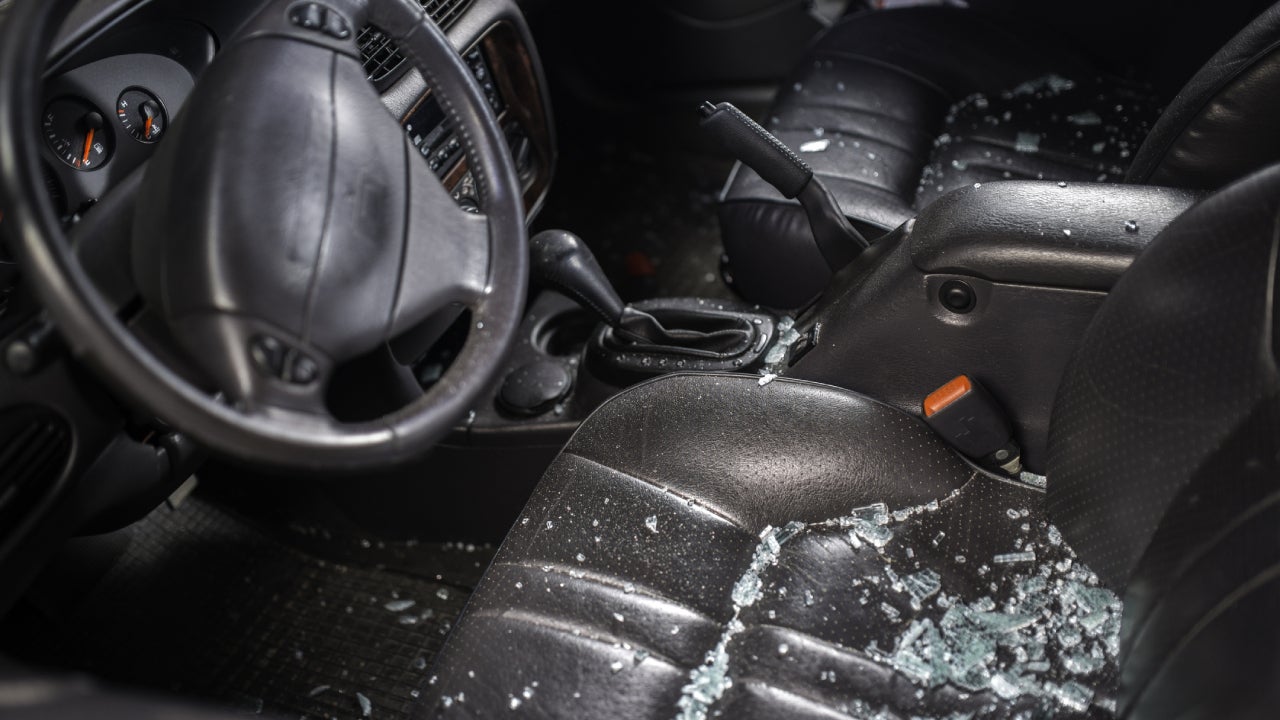Does car insurance cover windshield replacement?

Replacing a windshield can set you back hundreds of dollars. But the good news is that if you have comprehensive and collision coverage on your auto insurance policy, your out-of-pocket costs may be lower for a covered windshield claim, minus your deductible amount. Even better, the replacement cost could be $0 if you live in a free windshield replacement state. Bankrate’s insurance team explains how different types of auto insurance can help you replace your windshield and how to file a claim for windshield damage.
Does car insurance cover windshield damage?
There are various types of car insurance available to drivers, but not all car insurance covers windshield replacement. If you have your state’s minimum insurance, for example, which is the least amount of coverage needed to drive legally, you may not have insurance that would pay for your windshield repair or replacement. Minimum coverage generally includes liability insurance, which covers the other car and its occupants in an accident you cause. If the other driver causes the accident, however, their policy should help pay for your repairs — including windshield damage.
On the other hand, if you have full coverage, it’s possible your windshield is covered by insurance. Full coverage typically includes collision and comprehensive insurance (in addition to liability). These coverage types help pay for damage to your vehicle caused by accidents and other vehicle mishaps, such as weather damage.
Here’s how collision, comprehensive and liability coverage might apply to a windshield in need of repair or replacement.
Collision insurance
Collision insurance pays for vehicle losses and repairs that were caused by an accident. If your windshield is cracked after you rear-end another vehicle or drive into a pole, collision insurance will likely cover the windshield damage minus the deductible amount you chose for this coverage.
Comprehensive insurance
Comprehensive insurance adds protection for other events not related to a collision. Say a tree branch falls on your vehicle, a rock hits the glass, you strike a deer or a severe hailstorm cracks your windshield. In any of the events mentioned, comprehensive insurance could pay to replace the damaged glass, minus your deductible.
Read more: Filing a car insurance claim: A step-by-step guide
Liability insurance
If you do not have comprehensive coverage, you may still be able to have your windshield replaced. If you were involved in an accident that damaged your windshield and the accident was the fault of another driver, the at-fault driver’s property damage liability would pay for your expenses. However, most other scenarios would fall under comprehensive or collision coverage, and without those coverage types, you would pay the expenses out of pocket.
Even if you have a full coverage car insurance policy that covers windshield replacement, it may not be worth filing a claim. For example, if your deductible is $500 and the cost to replace your windshield is less than that, there’s no need to file a claim. And even if the replacement cost is slightly more, you may want to think twice. Insurance companies consider your claims history when pricing your policy.
How real-life drivers have handled windshield damage with insurance
If you’re undecided about whether or not to file a claim for windshield replacement, reading about other people’s experiences may help. We turned to Reddit for first-hand experience.
Reddit user review
*The quotes and citations included on this page have been verified by our editorial team and are accurate as of the posting date. Outlinked content may contain views and opinions that do not reflect the views and opinions of Bankrate.
What car insurance covers windshield replacement 100%?
Insurance companies may have a full glass coverage add-on available in many states that you can purchase in addition to comprehensive insurance. It is exclusively dedicated to glass repairs or replacement, often with a $0 deductible option.
Will I have to pay a deductible to fix my windshield?
According to the Insurance Journal, most auto insurers will waive the comprehensive insurance deductible for glass repair, but not glass replacement. However, if you live in a “zero deductible” state — Florida, Kentucky or South Carolina — you should not have to pay a deductible for a replacement. State law does not allow carriers to sell full glass coverage with a deductible.
It is also worth noting that depending on the size of the damage, a glass repair shop may patch the crack for free, so you wouldn’t even have to make an insurance claim. Regardless, it may be a good idea to get a quote from a repair shop first. That way, you will have a general idea of what to expect and whether your deductible will be a factor if you file a claim.
How to file a claim for windshield damage
To file a claim for a windshield replacement, you should assess the extent of the damage first. A good rule of thumb suggests that if a crack in the glass is at least 6 inches long, a complete windshield replacement is more prudent.
Smaller chips or cracks could be repaired by a vehicle glass professional without removing the entire windshield. If you doubt whether you should repair or replace a windshield, your insurance company or a glass specialist will be able to tell you.
Time is of the essence if your windshield is damaged. Even a small chip or crack could quickly spread. And the damage to the glass could affect the strength and integrity of the entire windshield. For your safety and to protect against further damage, consider repairing or replacing your windshield when there are signs of cracking or chips.
To file a windshield claim:
- Photograph and measure the damage to determine whether a repair is enough.
- File a claim online, over the phone or by visiting your local insurance agent.
- Provide the photos or size of the damage to your claims adjuster.
- Choose a glass and windshield specialist from the available options your insurance company provides. You may need to take your vehicle to a facility, although many companies have a mobile windshield service that comes to you.
Windshield damage that is repaired under the comprehensive portion of your car insurance coverage typically does not impact your car insurance premiums. However, because you filed a claim, it is possible that you could lose out on a claims-free discount if your car insurance company offers one.
Frequently asked questions
Why we ask for feedback Your feedback helps us improve our content and services. It takes less than a minute to complete.
Your responses are anonymous and will only be used for improving our website.
You may also like

Does car insurance cover hurricane damage?

Does car insurance cover flooding damage?

Does homeowners insurance cover roof leaks?

Does car insurance cover vandalism?


